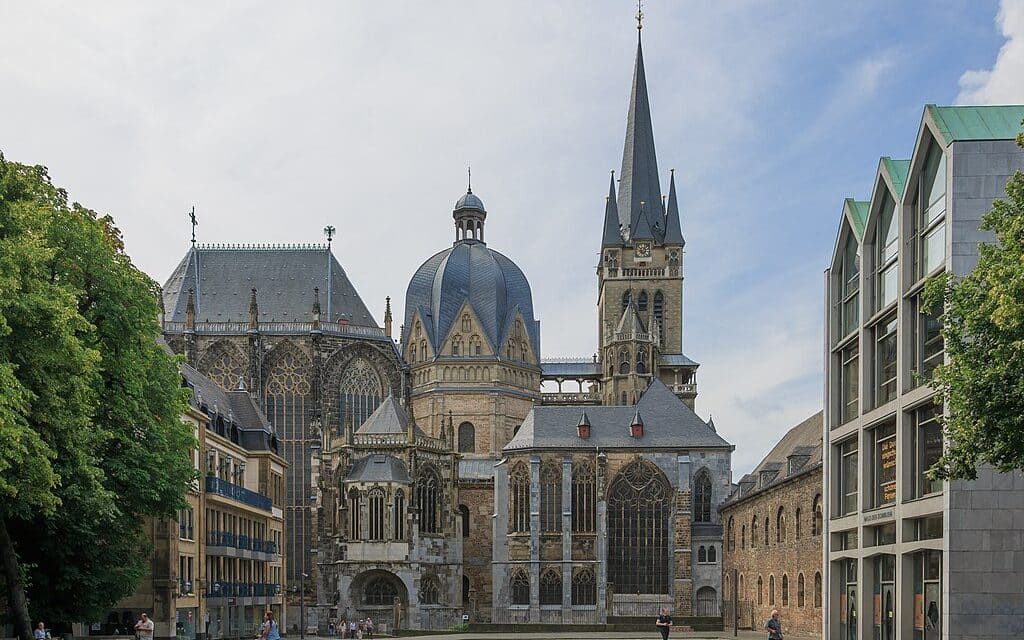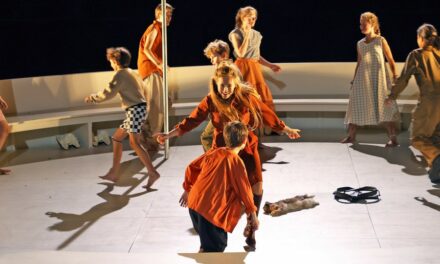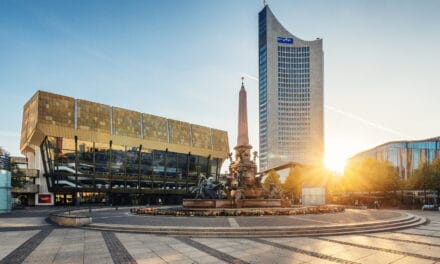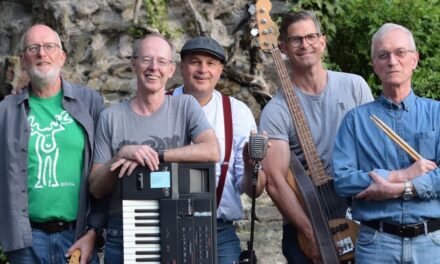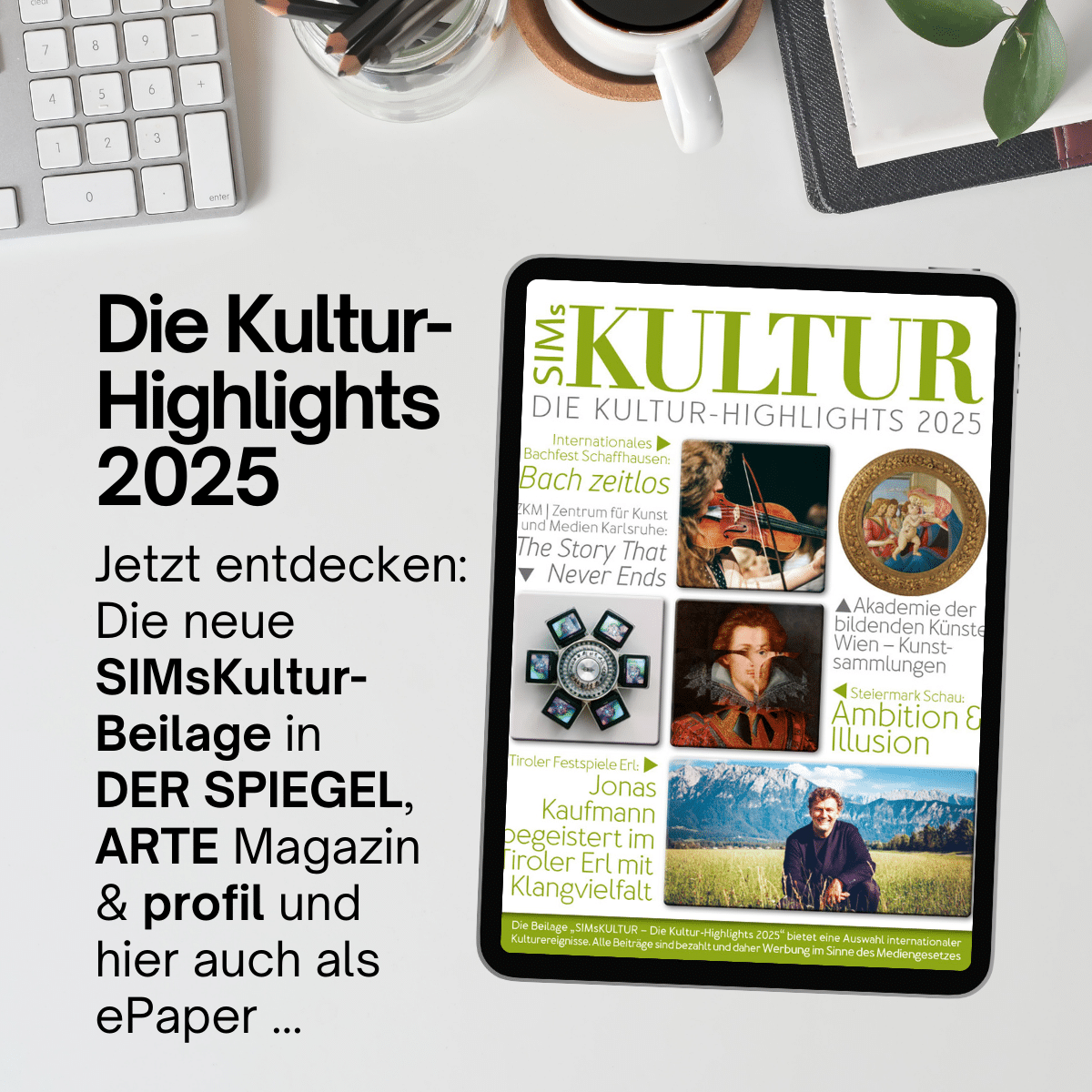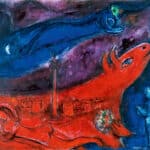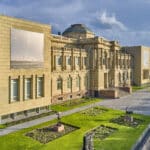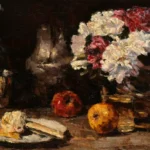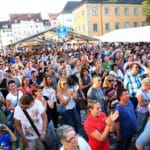Aachen Cathedral, Charlemagne's palatine chapel, is an artistic and architectural masterpiece. It is considered a symbol of the unification and resurgence of Western Europe after the end of the Roman Empire. Due to its special (architectural) historical significance, the cathedral was the first cultural site in Germany to be inscribed on the UNESCO World Heritage List in 1978.
Charlemagne made his Marienkirche a perfect image of the Heavenly Jerusalem, symbolizing the contact between the earthly and the heavenly. After around 20 years of construction, it was completed architecturally and liturgically around 803. Its significance stems from over 1200 years of history: as the burial place of Charlemagne, as the coronation church of the Roman-German kings and as a pilgrimage church that attracts worshippers from all over the world every seven years.
Today's cathedral was built as Charlemagne's palace chapel between 793 and 813 and became the emperor's final resting place just one year after its completion. Contemporaries declared the palace chapel to be a miracle of architecture - half divine, half human in origin. With its columns made of Greek and Italian marble, the bronze doors and the large - now lost - mosaic in the dome, the cathedral was considered an extraordinary artistic creation from the very beginning and the first domed building north of the Alps since antiquity. The current mosaic dates from 1880/1881. Influenced by both the classical and Byzantine styles, the church building was long regarded as a prototype of religious architecture, inspiring copies or imitations, and is still an exceptional example of chapels in the Julian style today.
The construction of the emperor's chapel in Aachen symbolized the unification of the West and its spiritual and political renewal under the aegis of Charlemagne. Even after his death, the cathedral continued to serve as a coronation site for the German emperors until 1531. Over a period of 600 years, 30 German kings were crowned in Aachen Cathedral. The marble sarcophagus in which Charlemagne was once buried can still be seen today, as can his imperial throne. The Aachen Cathedral Treasure Collection displays sacred cultural treasures from the late antique, Carolingian, Ottonian and Hohenstaufen periods. As works of art, archaeological and historical documents, they are of inestimable value.
Aware of the cathedral's European significance and in an effort to ensure its long-term preservation, the European Aachen Cathedral Foundation was established back in the 1990s. It is making increased efforts to understand and communicate the cathedral as part of a European cultural heritage. In order to make the cathedral and its history accessible to the youngest visitors, special children's tours are also offered by the cathedral children.
The Aachen Cathedral Treasury
The Aachen Cathedral Treasury contains the most important and extensive church treasure north of the Alps. The significance of the treasures is closely linked to their actual purpose: the decoration of St. Mary's Church, founded by Charlemagne around 800, and the celebration of its liturgy. The treasure grows with the additional significance of St. Mary's Church as the burial place of Emperor Charlemagne, coronation church of the German kings and European place of pilgrimage. In 1930, the church was given the status of an episcopal church (cathedral). Along with the cathedral, the cathedral treasury is also added to the UNESCO list in 1978 as the first German World Heritage Site.
Liturgical instruments, manuscripts, book bindings, reliquaries, chasubles and other vestments, sculptures, panel paintings and episcopal insignia document the long history of ecclesiastical life. Precious donations are on permanent display in the cathedral, such as the Pala d'Oro, Heinrichsambo and Barbarossa chandelier. The shrines of Charlemagne and Mary in the choir hold the most important Aachen shrines.
In the treasury, around 130 works of art are exhibited on three floors according to theme, representing the various functional areas of St. Mary's Church. In the basement, textiles from the museum's own collections are displayed on a rotating basis.

